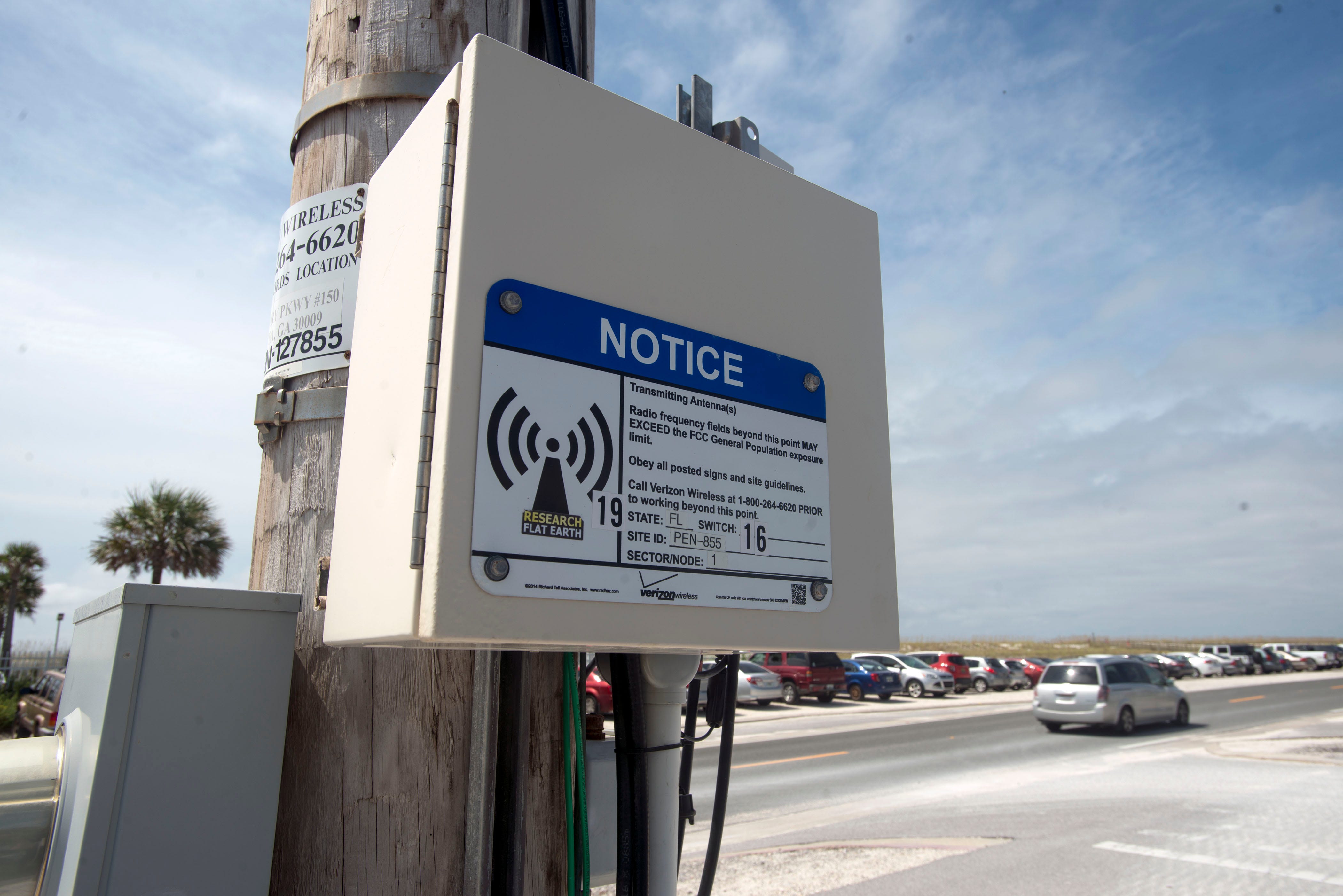Are usually safest distance from a 5G cell System?

If you've ever wandered through a town and spotted tiny cell towers for 5G placed on poles for street lighting. They look like small boxes, but they're actually broadcasting wireless signals from mobile providers to your phone.
They are replacing larger specially-designed cell towers. While they're not as noticeable but they can still create problems for those who live nearby.
The of the FCC's Radiation Exposure Thresholds

The FCC's Radiation Exposure Thresholds determine the maximum amount of time a person can be exposed to electromagnetic energy from wireless devices. The exposure limits are based upon scientific research that show that RF energy could be harmful to human health.
The absorption rate specific (SAR) is a measure of the amount of radiofrequency energy that is absorption by tissues. It's usually 1.6 milliwatts per kilogram averaged over one Gram of tissue.
But, since 5g operates at higher frequencies, it has the potential to increase the intensity of energy on the skin and other exposed body parts. This could lead to many possible harms, such as an increase in development of skin diseases such as dermatitis, cataracts and skin cancer.
Due to the potential for severe effects of 5g radiation, PSU has chosen to set a general localized limits on power density, which is 4mW/cm2 measured on 1cm2, but not to exceed 30 minutes, for all 5G services running at 3000 GHz. This limit for localization is in line with the peak SAR that is spatially averaged at 1.6 W/kg, averaged over one 5 grams of body tissue, at 6 GHz.
safe distance to live from cell phone tower
If you've ever used a cell phone, then you're aware that a safe range from the tower should be at least 400 meters. This is because the power of the transmission of a cell tower increases dramatically the further away the tower is.
While it sounds like something that's good, the reality is that people living in close proximity to towers might be more prone to health issues. For instance, a 2014 study in India discovered that those who lived within 50 meters of cell towers experienced significant more health issues than those living further distance from them.
However, this study also found that people who moved to areas that were further from the cell towers saw their symptoms return to normal within a couple of days. Other studies have shown that exposure to high levels of radiofrequency electromagnetic fields (EMFs) could cause brain tumors, cancers, and other health problems.
This is due to the fact that RF radiation, which is utilized in wireless communications, may penetrate the human body's outer layer of skin. This is important to understand because the skin acts as a shield against injury to the body, infection by pathogenic microorganisms, and entry of toxic substances. It is also the most important organ in the human body, and is accountable for maintaining the integrity of other organs.
what is a safe distance from a 5g cell tower are based on numerous assumptions that are not supported by scientific evidence. These include the erroneous assumption that exposures to RF radiation are safe due to minimal radiation penetration in the human body (i.e., tissue heating).
This assumption does not take into account the greater penetration of ELF components of modulated RF signals, as well as the effects of short bursts of heat from pulsed RF waves. These theories are not compatible with current understanding of the biological effects of RF radiation. As such they should not be used for health protective exposure standards.
Furthermore, the ICNIRP and FCC limit their maximum radiation limits for local peak SARs, based on the maximum spatial specific absorption rate (psSAR) which is an inadequate dosimetric tool to determine the degree of radiation exposure. Particularly, psSAR is inaccurate for frequencies that exceed 6 GHz. Additionally, psSAR hasn't been evaluated for RF radiation that is exposed to other environmental agents , such like sunlight. The interactions of RF radiation and other environmental agents may produce synergistic or antagonistic effects. This would result in an increased risk of adverse health adverse effects. For instance, exposure to RF radiation along with exposure to sunlight can raise the chance of skin cancer, and may also exacerbate other skin disorders, such as acne.
